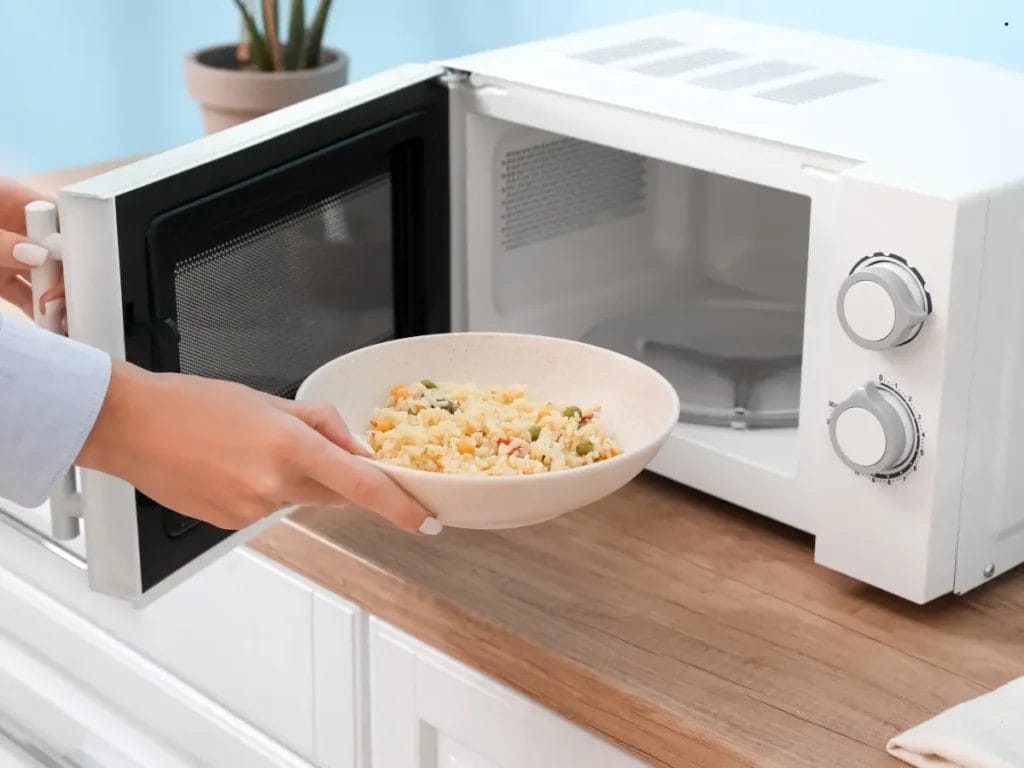Whether you’re upgrading your kitchen or buying your first microwave, understanding sizes is key to making the best choice. The right size balances space, cooking needs, and convenience. While larger models offer versatility, they need more room. Finding the perfect fit ensures efficiency without compromising your kitchen’s functionality.
Microwave Size Chart
| TYPE OF MICROWAVE | HEIGHT (IN.) | WIDTH (IN.) | DEPTH (IN.)1 | CAPACITY (CU.FT.) |
|---|---|---|---|---|
| Small Countertop Microwave | 10″ – 11″ | 15″ – 18″ | 12″ – 16″ | 0.5 cu. ft. – 0.9 cu. ft. |
| Standard and Large Microwaves | 12″ – 15″ | 21″ – 25″ | 16″ – 20″ | 1.0 cu. ft. – 2.2 cu. ft. |
| Over-the-Range Microwave | 17″ 10″ (low profile) | 30″ 24″ (compact) | 15″ – 18″ | 0.8 cu. ft. – 2.1 cu. ft. |
| Built-In Microwave | 17″ – 22″ | 24″, 27″ or 30″ | 20″ – 25″ | 1.0 cu. ft. – 2.2 cu. ft. |
Dimensions Explained: Height, Width, Depth, and Capacity
To choose the right microwave, it’s important to understand the dimensions and what they mean for your space and usage. External dimensions affect placement, as larger microwaves may need more counter or cabinet space, potentially limiting your kitchen’s layout. On the other hand, compact models save space but might lack versatility.
Internal capacity, measured in cubic feet, determines how much food your microwave can handle. While larger capacities are ideal for families or frequent cooks, they often require a bigger footprint, posing challenges in smaller kitchens. Typically, compact microwaves offer 0.5–1.0 cubic feet, midsize models range from 1.1–1.5 cubic feet, and full-size ones go up to 2.2 cubic feet or more.
Balancing these dimensions can be tricky. A microwave that’s too small may limit your cooking, while one that’s too big can dominate your space. Considering both your kitchen’s layout and your cooking habits ensures you choose the right fit for your needs.

Choosing the Right Size for Your Cooking Needs
The best microwave size for you depends on how you plan to use it and what you usually cook. For singles or small families, compact or midsize microwaves work well. These models save space and are great for reheating or defrosting, but they may struggle with larger dishes.
For larger households or frequent cooks, full-size or over-the-range microwaves are often a better choice. While these offer ample capacity and advanced features, they require more space and a higher investment. Balancing these tradeoffs—capacity versus space and cost—is key to making the right decision.
Additionally, consider your cooking tasks. If you mainly reheat leftovers or prepare simple meals, a smaller microwave might suffice. However, baking, grilling, or cooking for a crowd may demand a larger, more powerful model. Finding the ideal size ensures your microwave meets your needs without overwhelming your kitchen.
Microwave Wattage and Size: Are They Connected?
While size and wattage often go hand in hand, it’s important to understand their relationship. Larger microwaves typically have higher wattage, offering faster and more even cooking. For example, full-size models often range from 1,000 to 1,200 watts, making them ideal for complex cooking tasks. However, this increased power comes with tradeoffs, including higher energy consumption and a larger footprint.
Smaller microwaves, on the other hand, usually operate at 600 to 900 watts. While they are more energy-efficient and space-saving, they may take longer to cook or struggle with dense foods. Balancing these factors is crucial when choosing a microwave.
Cooking efficiency also depends on wattage. Higher wattage ensures quicker results but might be unnecessary for simple reheating tasks. By considering how you’ll use your microwave, you can determine the right combination of size and wattage for your needs without compromising efficiency or convenience.
Tips for Buying the Perfect Microwave
Beyond size, there are other features to consider when choosing your microwave. Advanced options like convection settings, smart technology, and sensors can enhance functionality. While these features improve versatility, they often come with higher costs and may be unnecessary if you only use your microwave for basic tasks. Balancing these enhancements with your actual needs is essential.
Brand and budget also play a significant role. Premium brands often promise better performance and durability, but more affordable options can offer excellent value if you prioritize essential features. Exploring different brands and setting a realistic budget ensures you get the best fit for your requirements.
Finally, don’t overlook warranty and durability. A longer warranty provides peace of mind, especially for higher-end models with complex features. By carefully evaluating these factors, you can find a microwave that perfectly balances size, features, and cost to meet your cooking and lifestyle needs.
FAQs
How do I determine the right microwave size for my kitchen space?
Answer: Start by measuring the available space, including width, depth, and height, to ensure the microwave fits comfortably. Consider ventilation requirements, especially for built-in or over-the-range models. If space is limited, opt for a compact microwave; for larger kitchens, midsize or full-size models can provide more functionality.
What is the relationship between microwave wattage and cooking efficiency?
Answer: Wattage directly impacts cooking efficiency. Higher wattage (1,000–1,200 watts) cooks food faster and more evenly, making it ideal for tasks like grilling or baking. Lower wattage (600–900 watts) is sufficient for reheating or defrosting but may take longer. Choose a wattage that matches your cooking needs without unnecessarily increasing energy consumption.
Are advanced features like convection or smart technology worth the investment?
Answer: Advanced features like convection, smart technology, and sensors are worth it if you plan to use your microwave for diverse tasks such as baking or precise cooking. However, they come with higher costs and may not be necessary if you primarily reheat or defrost food. Assess your cooking habits and budget before deciding.